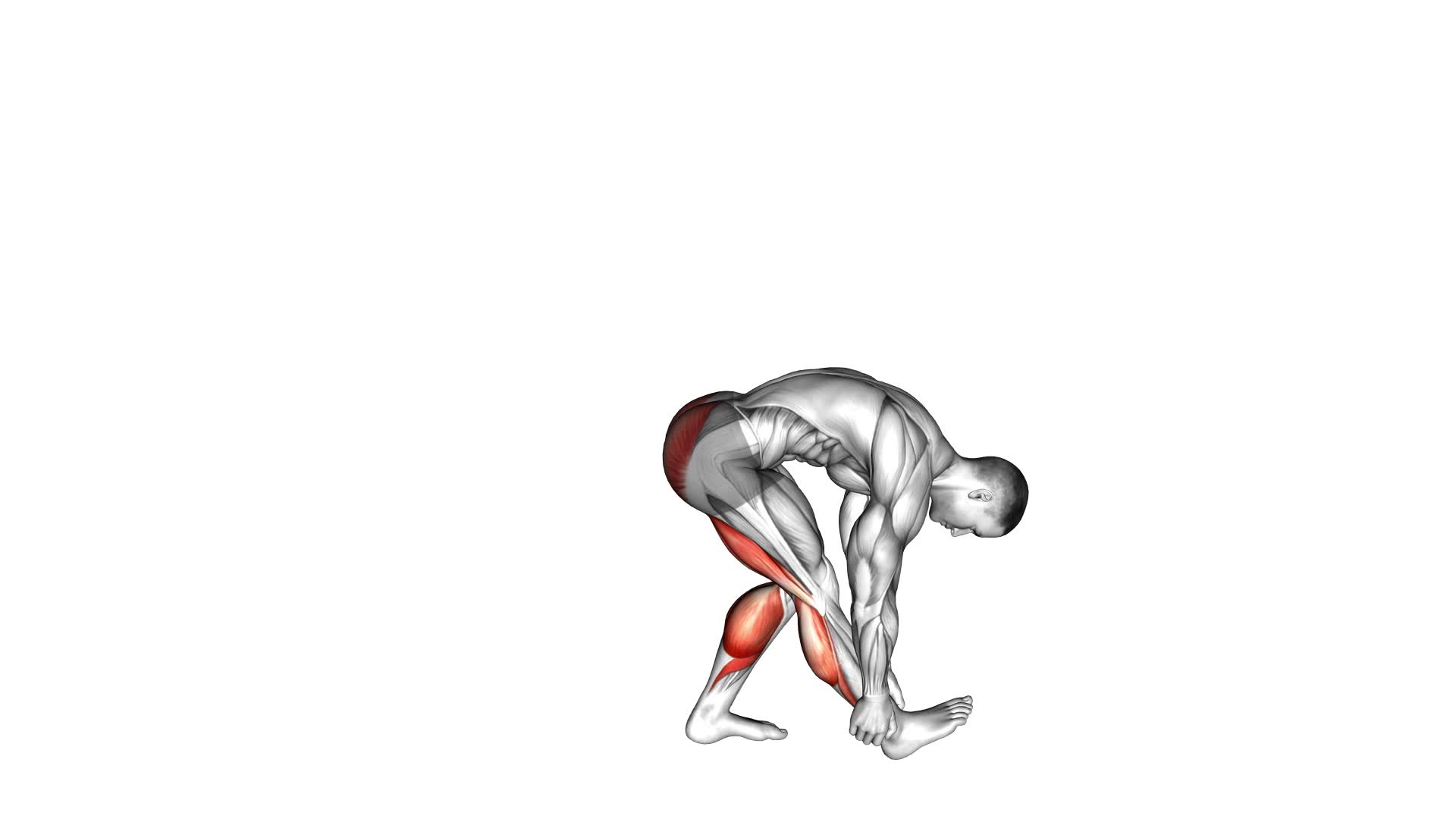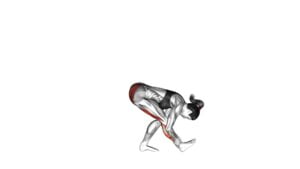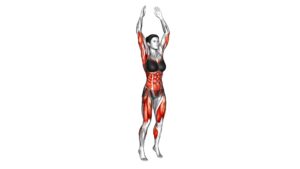Runners Stretch – Video Exercise Guide & Tips

Are you looking to improve your flexibility and prevent running injuries? Look no further than the Runners Stretch!
Watch This Exercise Video
In this video exercise guide, we'll show you the essential warm-up stretches, dynamic stretches for runners, and static stretches for improved flexibility.
Plus, we'll provide targeted stretches to help with common running injuries.
Get ready to enhance your running performance with proper stretching techniques and expert tips.
Let's get started!
Key Takeaways
- Stretching improves performance and increases flexibility and range of motion.
- Dynamic stretches like leg swings and walking lunges help prepare the body for running and prevent muscle soreness and tightness.
- Static stretches lengthen and relax muscles, increasing range of motion and reducing the risk of muscle strains and tears.
- Proper technique and consistency are key for improving flexibility and reducing the risk of muscle tightness and injury.
Benefits of Runners Stretch
To maximize the effectiveness of your runner's stretch, it's important to understand the benefits that this exercise offers. The runner's stretch is a key component of any runner's training routine. It not only helps to improve performance but also plays a crucial role in preventing injuries.
One of the main benefits of the runner's stretch is its ability to improve performance. By regularly stretching your muscles, you increase their flexibility and range of motion. This allows for a more efficient stride and better overall running form. As a result, you can run faster and with less effort.
In addition to improving performance, the runner's stretch is also essential for preventing injuries. When you run, your muscles and tendons are under a lot of stress. Failure to properly stretch before and after your run can lead to tight muscles and increased risk of injury. The runner's stretch helps to loosen up these muscles, reducing the chance of strains, sprains, and other common running injuries.
Essential Warm-up Stretches
Start your warm-up routine with these essential stretches to improve your running performance and prevent injuries through stretching:
- Standing Quad Stretch: Stand upright and grab your right ankle with your right hand. Pull your ankle towards your glutes, feeling a stretch in the front of your thigh. Hold for 20-30 seconds and repeat with the left leg. This stretch helps to loosen up your quadriceps, which are vital for running.
- Hamstring Stretch: Sit on the edge of a mat or a sturdy chair. Extend your right leg straight in front of you, heel on the ground. Lean forward, reaching for your toes, and feel a stretch in the back of your thigh. Hold for 20-30 seconds and switch to the left leg. This stretch targets your hamstrings, which can become tight and limit your running stride.
- Calf Stretch: Find a wall and stand facing it. Place your right foot forward and your left foot back, keeping both feet flat on the ground. Lean forward, pressing your hands against the wall, and feel a stretch in your left calf. Hold for 20-30 seconds and switch to the other side. This stretch is crucial for keeping your calf muscles flexible and preventing common running injuries like Achilles tendonitis.
By incorporating these essential warm-up stretches into your routine, you can improve your running performance and reduce the risk of injuries. Remember to always stretch gently and listen to your body, stopping if you feel any pain or discomfort.
Happy running!
Dynamic Stretches for Runners
Incorporate dynamic stretches into your warm-up routine to further enhance your running performance and prevent injuries, keeping your muscles engaged and primed for activity. Dynamic stretches involve moving parts of your body through a full range of motion, mimicking the movements you'll be doing during your run. These stretches not only increase flexibility but also improve blood flow and muscle activation, preparing your body for the demands of running.
Before your run, start with some leg swings. Stand next to a wall or support and swing one leg forward and backward, gradually increasing the range of motion. Switch legs and repeat. Next, try some walking lunges. Take a step forward with your right leg and lower your body into a lunge position, ensuring your knee doesn't extend past your toes. Push off with your left leg and repeat with the opposite leg.
After your run, it's important to cool down and stretch your muscles. Incorporate post-run stretches to help prevent muscle soreness and tightness. Some effective post-run stretches include calf stretches, hamstring stretches, and hip flexor stretches. Remember to hold each stretch for around 20-30 seconds and breathe deeply.
Static Stretches for Improved Flexibility
Now let's talk about the benefits of static stretches for improved flexibility.
Static stretches help to lengthen and relax your muscles, increasing your range of motion and reducing the risk of injury.
To perform static stretches correctly, you should hold each stretch for about 30 seconds without bouncing or jerking.
Incorporating a regular stretching routine into your exercise regimen can greatly improve your flexibility and overall performance.
Benefits of Static Stretches
To maximize your flexibility, incorporate static stretches into your routine for improved range of motion and muscle elasticity. Static stretches, where you hold a stretch for an extended period of time, offer several benefits that can enhance your performance and prevent injuries:
- Improved Performance: Static stretches help to increase your flexibility, allowing your muscles to move through a greater range of motion. This can improve your overall performance by enhancing your agility, speed, and power.
- Injury Prevention: By increasing flexibility, static stretches can help to prevent injuries such as muscle strains and tears. When your muscles are more flexible, they're less likely to become overstretched or strained during physical activity.
- Enhanced Recovery: Static stretches can also aid in post-workout recovery by reducing muscle soreness and promoting relaxation. Stretching after exercise helps to flush out lactic acid and increase blood flow, which can speed up the recovery process.
Incorporating static stretches into your routine can have significant benefits for your flexibility, performance, and injury prevention. Now, let's move on to the next section to learn about the proper technique for stretches.
Proper Technique for Stretches
To improve your flexibility and enhance your performance, it's important to understand and utilize the proper technique for static stretches. Proper stretching technique can help prevent injury and improve muscle flexibility.
When performing static stretches, start by warming up your muscles with light aerobic exercise. Then, choose stretches that target the major muscle groups you'll be using during your workout or activity. Hold each stretch for 15 to 30 seconds, without bouncing or jerking. Remember to breathe deeply and relax into each stretch.
It's important to avoid overstretching and listen to your body's limits. As you become more flexible, you can gradually increase the duration and intensity of your stretches.
Incorporating these stretching techniques and following these stretching tips will help you improve your flexibility and maximize your performance.
Stretching Routine Recommendations
To improve your flexibility and maximize your performance, incorporate a stretching routine consisting of static stretches for improved flexibility. Here are some recommendations to help you create an effective stretching routine:
- Warm up routine: Before starting your stretching routine, it's crucial to warm up your muscles and increase blood flow. This can be done through light aerobic exercises like jogging or jumping jacks. A warm up routine prepares your body for the stretches and reduces the risk of injury.
- Stretching frequency: Aim to stretch at least three times a week. Consistency is key when it comes to improving flexibility. By regularly stretching your muscles, you'll gradually increase your range of motion and prevent muscle tightness.
- Different muscle groups: Make sure to target all major muscle groups in your stretching routine. This includes your calves, quadriceps, hamstrings, hip flexors, glutes, and upper body muscles. By addressing each muscle group, you'll improve overall flexibility and reduce muscle imbalances.
Targeted Stretches for Common Running Injuries
Start by incorporating targeted stretches into your routine to help prevent or alleviate common running injuries. Prevention strategies and recovery exercises can play a crucial role in keeping you on the track and avoiding setbacks.
When it comes to common running injuries like shin splints, plantar fasciitis, or IT band syndrome, specific stretches can provide relief and help strengthen the affected areas.
For shin splints, try calf stretches and toe raises to improve flexibility and reduce muscle tightness. These stretches target the muscles in the lower leg and can help alleviate the pain associated with shin splints.
To prevent or recover from plantar fasciitis, focus on stretches that target the calf muscles and the plantar fascia itself. This includes stretches like the calf stretch against the wall and the towel stretch.
For IT band syndrome, stretches that target the IT band itself, as well as the hip muscles, can be beneficial. The standing IT band stretch and the lying glute stretch are effective in relieving tension and preventing further injury.
Incorporating these targeted stretches into your routine can help prevent common running injuries and aid in the recovery process. Remember to consult with a healthcare professional or a certified trainer for guidance and to ensure you're performing the stretches correctly.
Proper Stretching Techniques and Tips
To properly stretch and maximize your stretching routine, follow these tips and techniques:
- Avoid common stretching mistakes:
One common mistake is bouncing or using jerky movements while stretching, which can lead to injury. Instead, focus on slow and controlled movements to stretch the muscles effectively.
Another mistake is holding your breath while stretching. Remember to breathe deeply and relax as you perform each stretch.
Lastly, don't push yourself too hard. Stretch to the point of tension, not pain, and gradually increase the intensity over time.
- Warm up before stretching:
Before starting your stretching routine, it's important to warm up your muscles. Engage in light aerobic exercises like jogging or jumping jacks for 5-10 minutes to increase blood flow and raise your body temperature. This will help prepare your muscles for stretching and reduce the risk of injury.
- Incorporate dynamic stretches:
Dynamic stretches involve moving your muscles and joints through a full range of motion. These stretches are great for improving flexibility and can be done before a workout or physical activity. Examples of dynamic stretches include walking lunges, arm circles, and leg swings.
By following these proper stretching techniques and tips, you can improve flexibility, prevent injuries, and enhance your overall performance. Remember to listen to your body and adjust the intensity of your stretches accordingly.
Happy stretching!
Frequently Asked Questions
Can the Runner's Stretch Help Prevent Running Injuries?
The runner's stretch is an effective exercise for preventing running injuries. By regularly incorporating this stretch into your routine, you can experience the benefits of increased flexibility and improved muscle strength. This can help reduce the risk of common running injuries such as hamstring strains, shin splints, and IT band syndrome.
Stretching before and after your runs can also improve your overall performance and recovery. So, make sure to include the runner's stretch in your training regimen to stay injury-free.
How Often Should I Perform the Runner's Stretch?
To get the benefits of the runner's stretch and maintain proper form, it's important to know how often you should perform it.
Consistency is key, so aim to do the runner's stretch at least three to five times a week.
This will help improve your flexibility, reduce the risk of running injuries, and enhance your overall performance.
Remember to listen to your body and adjust the frequency according to your individual needs and goals.
Is It Necessary to Warm up Before Doing the Runner's Stretch?
Before doing the runner's stretch, it's important to warm up your muscles with dynamic exercises. This helps increase blood flow and prepares your body for the stretch. Warming up also reduces the risk of injury and improves overall flexibility.
What Are Some Modifications or Variations of the Runner's Stretch?
When it comes to the runner's stretch, there are a few modifications and variations you can try.
If you're pregnant, it's important to modify the stretch to accommodate your changing body. You can try using a support or prop, like a chair or wall, to help with balance and stability.
On the other hand, if you're looking for a more advanced variation, you can try adding a twist to the stretch or incorporating a lunge for an extra challenge.
Can the Runner's Stretch Help Improve Running Speed and Performance?
To improve your running speed and performance, try incorporating the runner's stretch into your routine.
This stretch can help improve flexibility and increase your stride length, allowing you to cover more ground with each step.
By targeting the muscles used in running, such as the hamstrings and hip flexors, the runner's stretch helps to enhance your overall running mechanics and efficiency.
Make sure to perform this stretch correctly and consistently for optimal results.
Conclusion
In conclusion, incorporating runners stretch into your exercise routine can bring numerous benefits. From improving flexibility to preventing common running injuries, stretching is essential for every runner.
By following proper stretching techniques and incorporating dynamic and static stretches, you can enhance your performance and reduce the risk of injuries. Remember to always warm up before stretching and listen to your body to avoid overstretching.
Make stretching a regular part of your running routine for optimal results.

Author
Years ago, the spark of my life’s passion ignited in my mind the moment I stepped into the local gym for the first time. The inaugural bead of perspiration, the initial endeavor, the very first surge of endorphins, and a sense of pride that washed over me post-workout marked the beginning of my deep-seated interest in strength sports, fitness, and sports nutrition. This very curiosity blossomed rapidly into a profound fascination, propelling me to earn a Master’s degree in Physical Education from the Academy of Physical Education in Krakow, followed by a Sports Manager diploma from the Jagiellonian University. My journey of growth led me to gain more specialized qualifications, such as being a certified personal trainer with a focus on sports dietetics, a lifeguard, and an instructor for wellness and corrective gymnastics. Theoretical knowledge paired seamlessly with practical experience, reinforcing my belief that the transformation of individuals under my guidance was also a reflection of my personal growth. This belief holds true even today. Each day, I strive to push the boundaries and explore new realms. These realms gently elevate me to greater heights. The unique combination of passion for my field and the continuous quest for growth fuels my drive to break new ground.



